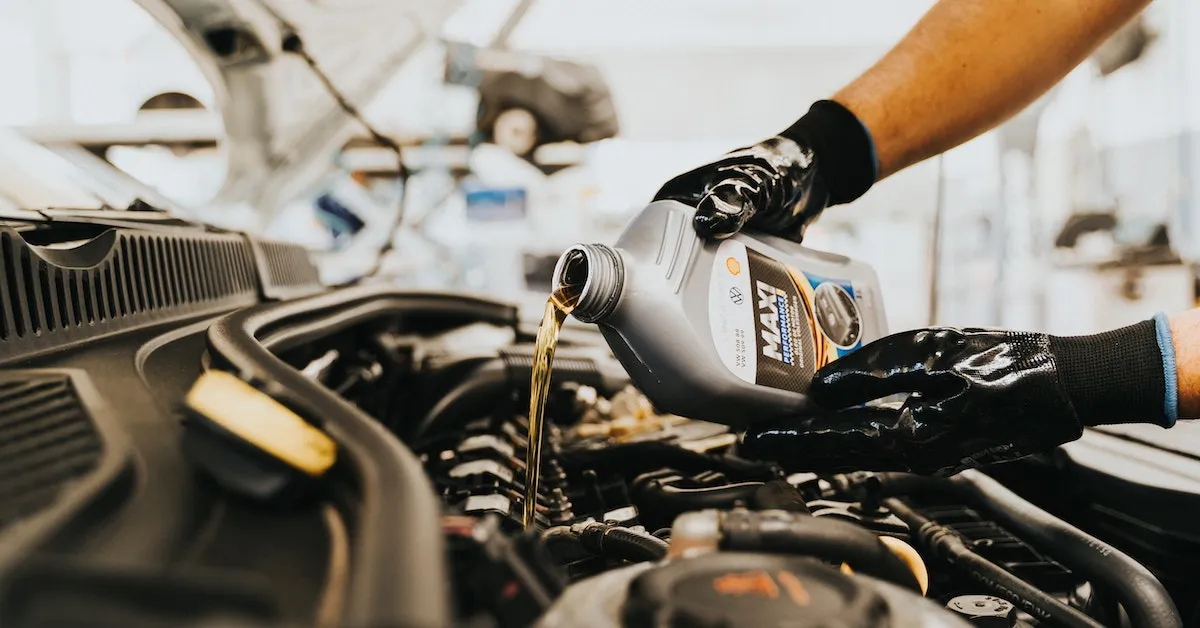Many drivers still follow outdated advice when it comes to engine oil changes. Decades ago, before synthetic oil became the norm, it made sense to change oil more frequently. Engines ran dirtier, fuel systems were less efficient, and oil/filter technology lagged behind. But today’s cars are far more advanced, and your oil change schedule should reflect that.
When Should You Really Change Your Oil?
Are you convinced that your oil needs to be changed early? Maybe a service advisor at your local shop insists it’s necessary. But here’s the truth: your vehicle’s manufacturer has a team of expert engineers who designed your engine and established service intervals based on extensive testing.
If your manual says to change the oil every 5,000 or even 10,000+ miles, trust it. Those intervals aren’t arbitrary, they’re designed to keep your engine running efficiently while protecting your powertrain warranty. The recommended interval is printed in your owner’s manual, a legally reviewed document you can rely on.
Why Dirty Oil Isn’t Always Bad
Have you checked your oil recently and thought it looked too dark? Don’t panic, dirty oil doesn’t automatically mean it’s no longer effective. As long as you’re using the recommended oil and OEM filter, your system is designed to handle the full service interval.
The key is to monitor the oil level, not just the color. A low oil level is far more dangerous than oil that looks dirty.
How Often Should You Check Your Engine Oil?
A good rule of thumb is to check your engine oil every 1,000 miles. Some oil consumption is normal, generally it’s about a few tenths of a quart but in some cases it may be up to one full quart every 1,200 miles. If your vehicle is burning more than that, it could signal a problem worth discussing with your dealership.
Important Note for Vehicle Owners
While the manufacturer guarantees certain things under warranty, it’s your responsibility to keep the oil level within the safe range between services. If engine failure occurs due to low oil, the cost of repair is on you, not the manufacturer.
Always read your owner’s manual and be a well-informed consumer.
Pro Tip
Set a monthly reminder on your phone to check your engine oil level. It only takes a few minutes and can save you thousands down the line.
Engine Oil Change FAQs
It’s not harmful, but it’s unnecessary and wastes money. Modern engines and synthetic oils are designed to last much longer between changes.
Check it every 1,000 miles. Oil consumption is normal, and monitoring the level helps avoid costly engine damage.
Oil darkening is normal and doesn’t mean it’s no longer effective. Rely on mileage and manufacturer guidelines, not just appearance.
Yes. The manual is based on rigorous engineering and legal review. It’s the most accurate guideline for your specific vehicle.
If the engine fails due to insufficient oil and lack of maintenance, repairs may not be covered under warranty. Regular checks and top-offs are your responsibility.
Depending on the engine design and current condition, a lack of lubrication may first cause the crankshaft bearings to seize. Or the timing belt/timing chain tensioner to loose tension which causes the valves to impact the pistons. Or the piston rings may fail first.
Final Thoughts
If you’ve been changing your oil early, your dedication to vehicle care is commendable. But now that you know better, you can redirect those extra oil change dollars toward something more meaningful… like a nice dinner out with family and friends.
Want more car ownership tips? Read our article on How to solve wind noise issues in your car.
How To Check Your Engine Oil Level
Even though this demonstration is performed on a Subaru (see video below), it is a great resource for most vehicles that use a dipstick. Some dipsticks show a “Low” or “Full” mark or an area that says “add oil”. Refer to your owner’s manual for detailed illustrations if you are unsure.
- It’s important to check your engine oil on a level surface and before you’ve started the engine.
- To properly check your oil level on the dipstick, the engine must be off.
If you have been driving the vehicle for more than five minutes, and decide to check the oil level, be sure to consider that a small amount of oil will not register on the dipstick.
What if you own a vehicle that does not have a dipstick? At that point you can rely on the instrument cluster to show you the oil level (if available), otherwise you must refer to the owner’s manual or just call the service advisor at the dealership. For these configurations, the system will usually warn you when the oil is too low.













